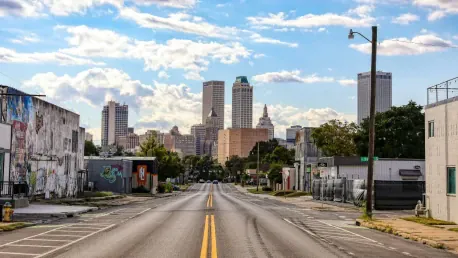Construction officially commenced on Tulsa’s “Stonehenge” project on April 7 to revamp the outdated, unsafe, and congested I-44 and U.S. 75 interchange in Tulsa, Oklahoma. Known locally as “Traffic Henge” due to the towering, unused bridge piers, this project is the Oklahoma Department of Transportation’s (DOT) most expensive venture ever at $252 million. Tulsa-based Manhattan Road & Bridge is overseeing the efforts combining three phases into one to streamline the process and mitigate traffic disruptions.
The project aims to reconfigure the interchange at I-44 and U.S. 75 while making several enhancements to the nearby infrastructure. These improvements involve widening U.S. 75 between 71st Street and 41st Street, replacing the U.S. 75 interchange at 61st Street, constructing a new frontage road between 61st Street and Skelly Drive, connecting and extending 51st Street under U.S. 75, and building a pedestrian bridge over railroad tracks near Elwood Avenue on 51st Street. Initial piers for future flyover ramps were constructed during the first phase for cost efficiency and minimizing traffic delays.
Federal grants funded the project substantially through the Infrastructure Investment and Jobs Act, contributing $95 million, including an $85 million Mega Grant for large, complex projects, and a $10 million RAISE Grant for impactful surface transportation endeavors.
Completion is anticipated by summer 2028, contingent on weather conditions. This project represents a significant step in the state’s long-term infrastructure plan. The Oklahoma DOT’s 2025-2032 Eight-Year Construction Work Plan outlines 1,647 projects, allocating $8.6 billion for various road and bridge developments across the state. This comprehensive approach demonstrates Oklahoma’s commitment to enhancing transportation infrastructure and ensuring safer, more efficient travel for residents and commuters.









